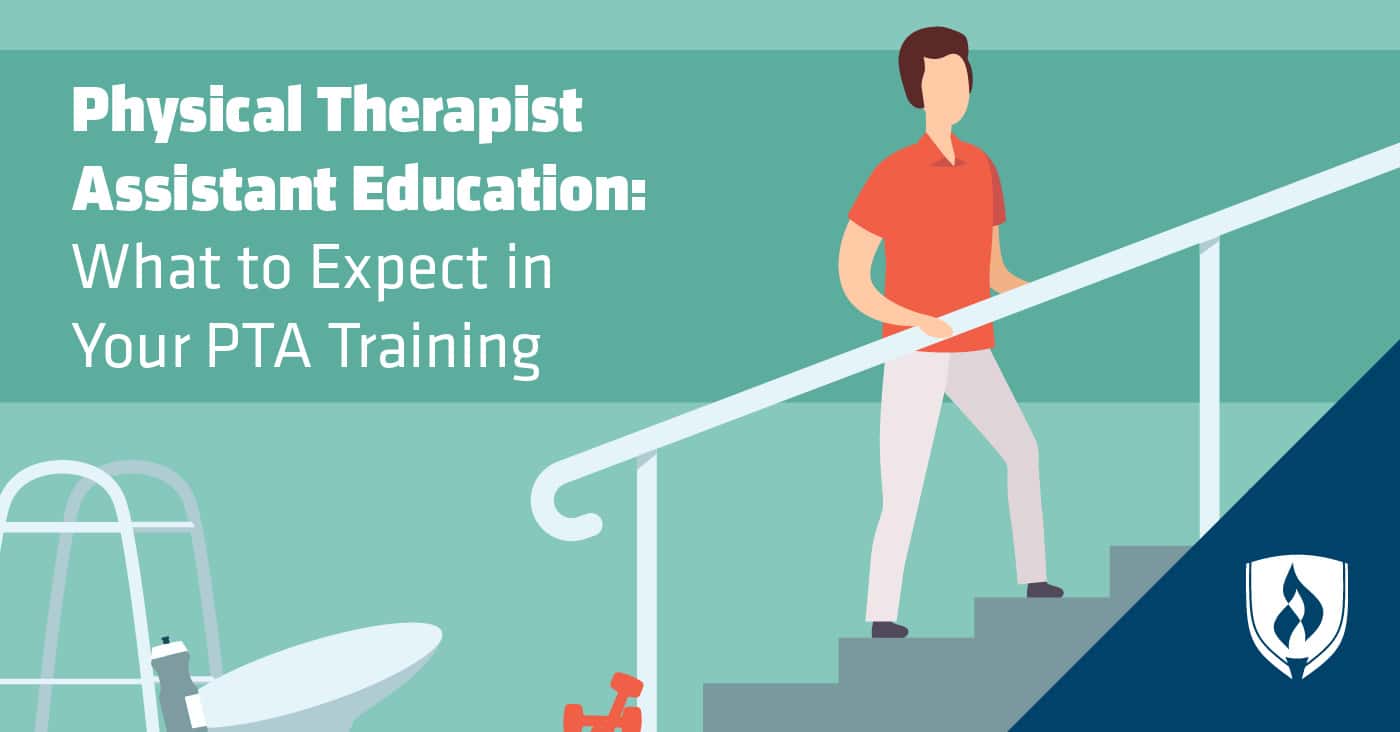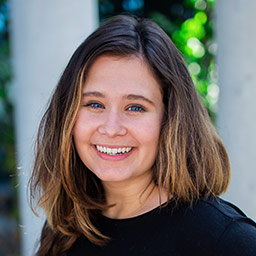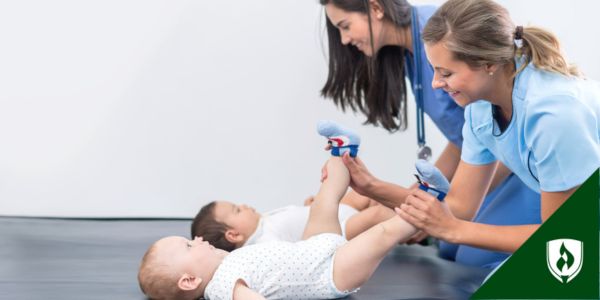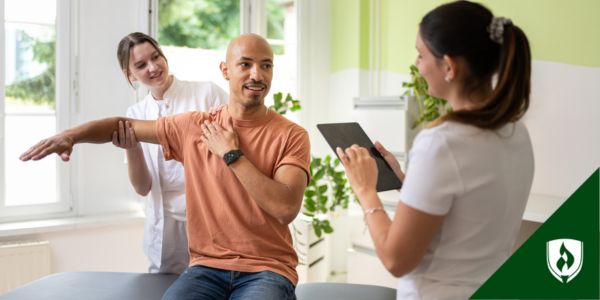Physical Therapist Assistant Education: What to Expect in Your PTA Training
By Kirsten Slyter on 07/08/2019

You want to make a difference and you aren’t the type to wait around. You can see yourself as a physical therapist assistant—working with patients every day, creating personalized treatment plans and walking alongside patients in their paths toward recovery. You like that PTAs can work in a variety of settings, earn a respectable income and appear to have solid job security—the Bureau of Labor Statistics projects employment of PTAs to grow 12 percent by 2030.1
But, what does it really take to become a physical therapist assistant? Through your research you’ve learned that physical therapist assistants are required to earn an associate’s degree and complete a licensure or certification process. Let’s break down the components of a PTA program so you know what to expect each step of the way.
4 Key components of a physical therapist assistant education and training program
When researching physical therapist assistant education options, there are some important factors to keep in mind. Consider the following.
Picking a PTA Associate’s degree program
When choosing a PTA program, it’s important to find a quality program that will prepare you with everything you need to make a positive impact on future patients. In the industry, the gold standard for PTA education quality remains accreditation. This is important because in order to take the licensing exam needed to work as a PTA, you must complete a PTA associate’s degree program accredited by the Commission on Accreditation in Physical Therapy Education. Though accreditation information should be available on individual schools’ websites, you can also search CAPTE’s directory of accredited programs.
There are other factors to consider as well. Location, online learning modalities, faculty qualifications and alumni outcomes are all worth weighing. If that seems like a lot to consider, remember that while all these factors are important, they might not all have equal weight—your priorities will help guide your search.
According to the American Physical Therapy Association (APTA), most PTA programs are approximately two years of training including general education courses, physical therapy classes and clinical experiences.2 The Rasmussen University Physical Therapist Assistant program consists of blended online classwork and on-campus labs that can completed in as few 18 months, including general education courses.3
Another factor you’ll want to consider are the requirements you’ll need to meet before beginning your PTA training. These requirements will vary from school to school, but these differences are worth researching. For instance, many PTA programs are structured in a way that requires students to complete general education courses before taking core PTA program courses, notes Amy Garrigues, PT, DPT, executive director at the School of Health Sciences at Rasmussen University. The Rasmussen University Physical Therapist Assistant program takes a different approach in that students start with a mix of both technical and general education courses right away.
If followed, this structure allows students to take a mix of classes featuring one PTA-centric course each quarter until their final quarter, which includes a capstone and clinical experience.
Physical therapist assistant courses
As you might expect from a field focused on physical activity and movement, a physical therapist assistant’s education includes a lot of hands-on experiences like clinicals and lab work. But it also includes the type of classwork you may have a little more experience with. So what courses and topics can you expect to see covered in a PTA program? Here are a few examples you’ll find at Rasmussen University:
- Physical Therapy Practice Across the Lifespan: In this course, you’ll study holistic human development so you can treat children and aging adults in a manner consistent with their development.
- Principles of Musculoskeletal Physical Therapy: This two-part course has students learning about the structure and function of the upper- and lower-quarter musculoskeletal system, learn the disorders that commonly occur and treat those disorders with evidence-based therapeutic exercises.
- Physical Therapy Practice for Special Populations: Throughout this course, you’ll learn what physical therapy can do for special populations, including patients with cardiovascular, pulmonary and pelvic health conditions.
Worried about fitting that classroom time into your schedule? You’ll be happy to hear Rasmussen Universityoffers online courses that may give you additional flexibility in how and where you tackle course content. Whether you prefer study at home, in a coffee shop, in the morning, at night or somewhere in between, you can complete your Rasmussen University classwork in a way that fits your life.
Physical therapist assistant labs
PTA training is kinetic and you need to get your hands dirty to really learn. Because of this, many PTA-specific courses include lab work. These labs are crucial to your learning as they give you a chance to practice what you’ve learned while preparing you for clinical experiences.
Labs are just a fact of life when it comes to PTA training—but how they’re conducted can vary. Garrigues says many traditional PTA programs hold labs 2-3 times per week for two hours at a time. Instead, students in the Rasmussen University program complete their lab work during longer-but-less-frequent lab times. Depending on the campus, students are only required to be on site for three to five days per month for labs that last four to eight hours.
Garrigues says there are a few positives to this approach. For one, students will spend less of their valuable lab time “settling in” before getting to work each session and more time getting in uninterrupted practice.
“The labs are immersive and concentrated,” Garrigues says. “Our lab design offers focused and intentional repetitive practice that allows more dedicated time to achieve refinement and a high level of proficiency.”
This format is a potential boon for anyone who needs to travel a long distance to campus or is just looking to minimize their commute times in general. You’ll get the same amount of lab work, just in higher concentrations that don’t require as many trips—which helps provide additional flexibility for fitting this program to student schedules.
Physical therapist assistant clinical education
Another critical component of a physical therapist assistant’s training is clinical education (or clinicals). This is when PTA students get to apply—under supervision—what they’ve learned throughout their training at real healthcare facilities.
For many PTA students, clinicals can be a launch pad. The experience prepares them for what their careers will look like while providing an opportunity to explore which practice settings and patient populations they enjoy working with best. The APTA says that typically PTA students spend approximately 25 percent of their program—16 weeks on average—in full-time clinical experiences.2 Rasmussen University PTA students complete two separate full-time clinicals that result in a total of 570 clinical hours. These clinical experiences can take place in a variety of facilities ranging from hospitals to small outpatient clinics—which gives students an excellent opportunity to see the differences firsthand.
Preparing for physical therapist assistant licensure
Once you’ve completed the coursework, labs and clinicals that comprise a PTA training program, there’s one last important step to complete: becoming licensed by your state. How do PTAs become licensed? The details will vary from state to state, but taking the National Physical Therapy Exam (NPTE) is one universal component. Preparation is key! Though retakes are available, you may only attempt the exam three times in one year or six times total.
Ready to take the first step?
Now that you know more about the key components of a physical therapist assistant training program, you should feel confident in knowing the road ahead. If you’re ready to take the first step toward a PTA career, check out the Physical Therapist Assistant program page to see how Rasmussen University can help you make it happen.
1Bureau of Labor Statistics, U.S. Department of Labor, Occupational Outlook Handbook, [accessed June, 2019] www.bls.gov/ooh/. Information represents national, averaged data for the occupations listed and includes workers at all levels of education and experience. Employment conditions in your area may vary.
2American Physical Therapy Association, Physical Therapist Assistant (PTA) Education Overview [accessed June 2019] https://www.apta.org/PTAEducation/Overview/
3Completion time is dependent upon the number of transfer credits accepted and the number of courses completed each term.
Graduation from a physical therapist assistant education program accredited by the Commission on Accreditation in Physical Therapy Education (CAPTE) is necessary for eligibility to sit for the licensure examination, which is required in all states.
Accredited programs:
The Physical Therapist Assistant Program at Rasmussen University – Brooklyn Park/Maple Grove is accredited by the Commission on Accreditation in Physical Therapy Education (CAPTE), 3030 Potomac Ave., Suite 100, Alexandria, Virginia 22305-3085; phone: 703-706-3245; email: [email protected]; website:https://www.capteonline.org. If needing to contact the program/institution directly, please call 833-606-1911 or email [email protected]
The Physical Therapist Assistant Program at Rasmussen University – Ocala is accredited by the Commission on Accreditation in Physical Therapy Education (CAPTE), 3030 Potomac Ave., Suite 100, Alexandria, Virginia 22305-3085; phone: 703-706-3245; email: [email protected]; website: https://www.capteonline.org. If needing to contact the program/institution directly, please 833-606-1911 or email [email protected].
Commission on Accreditation in Physical Therapy Education (CAPTE) 3030 Potomac Ave., Suite 100 Alexandria, VA 22305-3085
[email protected] 703-706-3245




